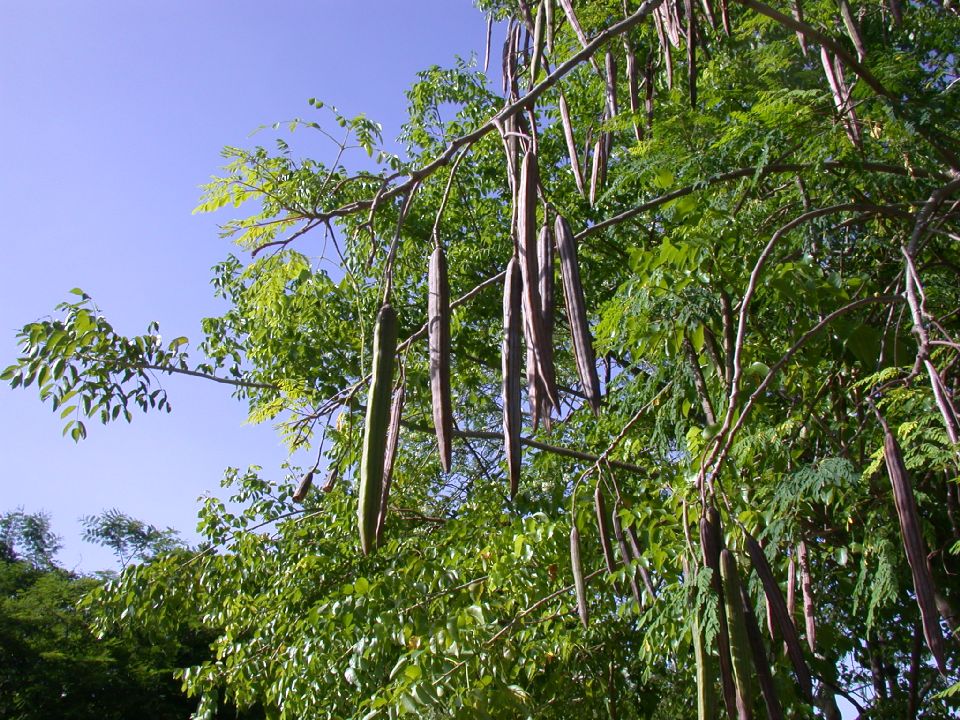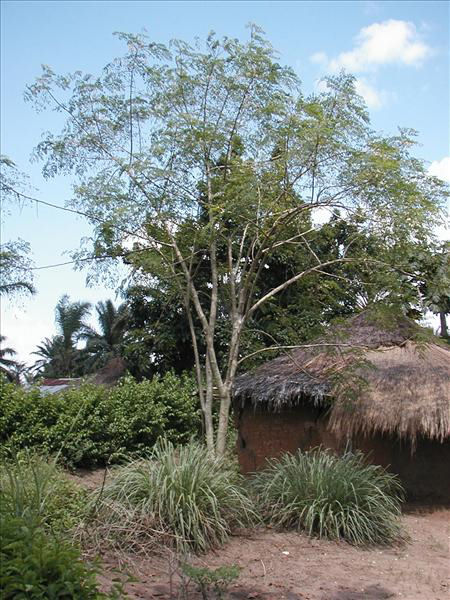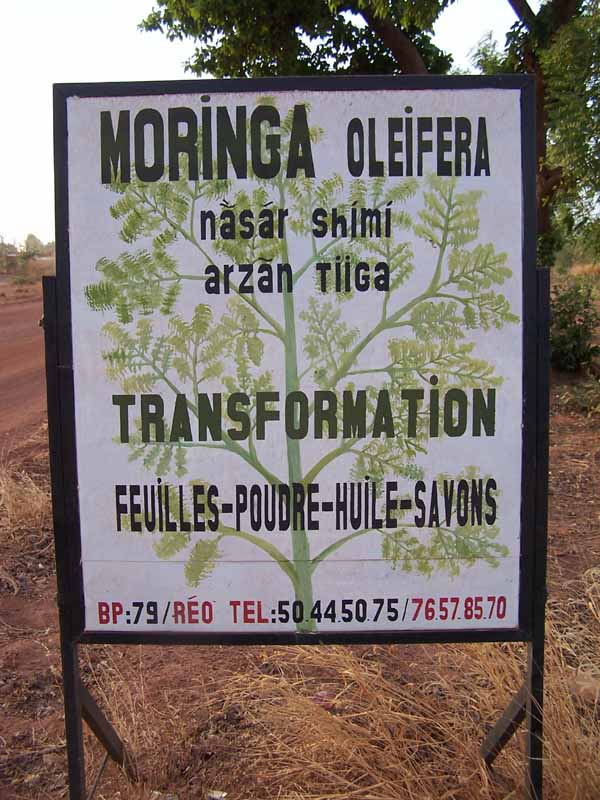The Moringa - tree of life
In the news these days we learn that a new food crisis is under way. The UN special envoy reporting on the right to food, Olivier de Schutter, is worried. When asked “Which areas are under the heaviest threat of a food crisis?” he replies “First in line: the countries of the Sahel. They already have a food shortage, since they often produce for exports and depend on imports, in particular of rice and also of wheat.” Therefore it is all the more important that we continue our thinking on the food issue. Today I want to tell you about the Moringa tree and its benefits.

 The Moringa is a small tree, to a height of 4 – 6 m.
The Moringa is a small tree, to a height of 4 – 6 m.
Its scientific name is: Moringa Oleifera;or arjanayri in Jula, arzantiiga in Morré and legi-lakii in Fulfulde. It is grown for its leaves, which is used as vegetables and as staple food by some populations, notably the Konso of Ethiopia. -the Moringa leaves are the best vegetable of the tropical region. But the seeds can also be eaten boiled. The tree is ideal for planting either in the city or in the countryside. It grows rapidly and easily in different climates. It keeps its leaves all year round.
In some cities, Niamey in Niger for instance, Moringa leaves are widely consumed. In Burkina Faso the Moringa is still not well known or widely grown, in spite of the efforts of a number of organisations working on its introduction. Maybe because the leaves are greedily reaped by animals and the trees have to be protected in order to grow or even survive.
A truck loaded with Moringa leaves in NigerBelow are some extracts of from a previous newsletter of some years ago about the life- giving Moringa tree. We have kept its original family-friendly style.
The leaves keep growing all year round and cutting does not harm it.
The leaves are made up of smaller folliculi and have a dented rim.

 The colour of its flowers is off white.
The colour of its flowers is off white.
and the fruits are shaped as 30-50 cm long, three-sided pods (like giant string beans). The fruit contains small round black seeds with three small wings.
The little Moringa tree likes sunshine and does not thrive in too wet soils.
The leaves, flowers and fruits can be eaten as vegetables,
they may be used in sauce, in medicinal products and for disinfection of wounds.
Extracts can be administered as a tonic rich in vitamins to ailing patients.
The dried leaves keep well.
Ground seed grains added to dung soiled water, will purify the water: the dung will settle at the bottom of the pail and the water will be clean. This technique has been used for a long time along the banks of the river Nile.
From the seeds it is also possible to obtain a vegetable oil, which is used as a lubricant in watches and clocks.
The Moringa bark, especially when slit, will secrete a gluey substance, which is used in sauce.
The roots are retrieved to make poultice, which generates heat and relieves pain when applied to a sore spot.
In addition the branches serve to make enclosures or, when planted in tight rows, form a hedge.

 If you wish to grow this tree, you can either plant its seeds or branches with buds (slips or cuttings) : The branches selected must have a thickness of about 2 fingers and a length of 1 m.
If you wish to grow this tree, you can either plant its seeds or branches with buds (slips or cuttings) : The branches selected must have a thickness of about 2 fingers and a length of 1 m.
The leaves can be reaped and the tree trimmed without harm..
The Moringa is very useful and can be seen both in gardens and in the fields.
Would you not like to grow one of your own around your plot of land or around your home?
You can find the Moringa seeds at the entrance of the town of Réo, 10 kms from Koudougou,
at the right hand side. Or perhaps you have a neighbour who already grows a Moringa in his
courtyard ?
Ask him for some seeds.
(This first part is an extract from the 1989 Almanach de l’ Assistance Ecologique).
And to conclude, here is a recipe for a remedy against malnutrition:
Take some Moringa leaves and dry them in the shade.
When the leaves are well dried, ground them to a powder.
Sift the powder and put them in a jar that is firmly closed.
For sauce to be served with a dish of rice, couscous, or tô (maize or millet dough) add one or two spoonfuls of Moringa
For infants one spoonful of Moringa may be added when cooking porridge. Moringa flour can also be used instead of flour/powder from other plants. It is very rich and nourishing.
An infant, 1 – 3 years of age, given one table spoon of Moringa flour three times a day, will develop good resistance to malnutrition and various illnesses. Il me semble queA few Moringa trees should be grown around each and every nutritional child care center CREN (Centre for Nutritional Recovery and Education). There the good leaves could be used on site and mothers could be educated to sow the seeds and plant the tree in their own courtyards!
If you consistently add Moringa flour to your sauce, you will be sure to eat rich and well balanced meals.
Source : Almanach de l'Assistance Ecologique 1989 et 2001.
Koudougou, January 15th 2011
Maurice Oudet
Director, SEDELAN









